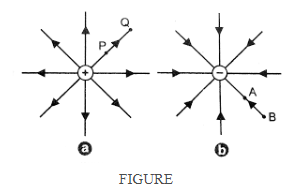The electric potential at point A is 20V and at B is −40V. Find the work done by an external and electrostatic force in moving an electron slowly from B to A.
Step by step video & image solution for The electric potential at point A is 20 V and at B is -40 V. Find the work done by an external and electrostatic force in moving an electron slowly from B to A. by Physics experts to help you in doubts & scoring excellent marks in Class 12 exams.
Topper's Solved these Questions
- BOOK - DC PANDEYCHAPTER - ELECTROSTATIC POTENTIAL AND CAPACITORSEXERCISE - Check point 2.115videos
ELECTROSTATIC POTENTIAL AND CAPACITORS
- BOOK - DC PANDEYCHAPTER - ELECTROSTATIC POTENTIAL AND CAPACITORSEXERCISE - Check point 2.215videos
ELECTROSTATIC POTENTIAL AND CAPACITORS
- BOOK - DC PANDEYCHAPTER - ELECTROMAGNETIC WAVESEXERCISE - Sec C22videos
ELECTROMAGNETIC WAVES
- BOOK - DC PANDEYCHAPTER - ELECTROSTATICSEXERCISE - Medical entrances gallery37videos
ELECTROSTATICS
Similar Questions
The potential at a point A is – 500 V and that at another point B is + 500 V. What is the work done by external agent to take 2 units (S.I.) of negative charge from B to A.
View SolutionThe electrical potential at point in an electric field is 6 V. Find the work done in bringing 12 C of charge from infinity to that point.
View Solution
Knowledge Check
- Question 1 - Select One
The electric potential at. Point A is 20 V and B is – 20 . The work done by an external force in moving electron slowly from B to A is
A−6.4×10−18JB+6.4×10−18JC4×10−20JD−4×10−20J - Question 2 - Select One
A charge Q is placed at the origin. The electric potential due to this charge at a given point in space is v. The work done by an external force in bringing another charge q from infinity up to the point is
AVqBVqCV+qDV
A spherical shell of radius r with a uniform charge q has point charge q0 at its centre. Find the work performed by the electric forces during the shell expansion slowly from radius R to 2R. Also find out work done by external agent against electric forces.
View Solution1μC charge is shifted from A to B, and it is found that work done by an external force is 40μJ. In doing so against electrostatic forces, find potential difference VA−VB.
View SolutionA charge of 20μC produces an electric field. Two points are 10 cm and 5 cm from this charge. Find the values of potentials at these points and calculate work done to take an electron from one point to the other.
View SolutionExpress electric potential (V) in terms of work done (W).
View SolutionFigures (a) and (b) show the field lines of a positive and negative point charge respectively

(a) Give the signs of the potential difference VP−VQ,VB–VA.
(b) Give the sign of the potential energy difference of a small negative charge between the points Q and P, A and B.
(c) Give the sign of the work done by the field in moving a small positive charge from Q to P.
(d) Give the sign of the work done by the external agency in moving a small negative charge from B to A.
(e) Does the kinetic energy of a small negative charge increase or decrease in going from B to A?View Solution1μC charge is shifted from A to B and it is found that work done by external force is 80μJ against electrostic forces, find VA−VB
View Solution

